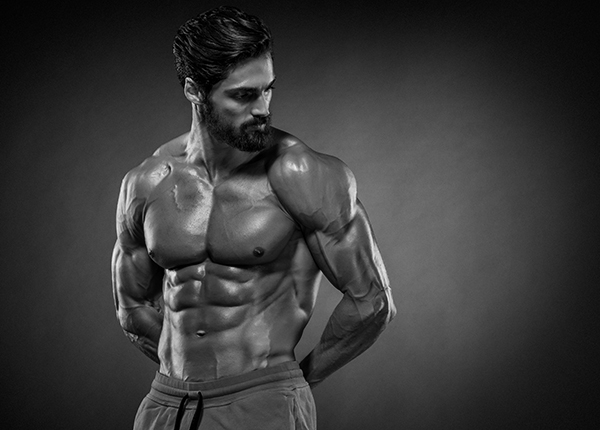Blog
How to Lean Out and Have a Successful Summer Cut
It’ll be pool season before you know it. Here’s what you can do to be ready.
Every summer you play catch up to get beach-body ready. You scramble around—crash dieting, feeling miserable, and putting your body through the wringer trying to lose weight fast.
Fortunately, you can make your last-minute antics a thing of the distant past. In this post, you’ll learn how to create a sustainable weight-cutting diet so you can slim down, trim off the extra fat, and reveal those washboard abs you spent all winter building up in the gym.

What Does It Mean to “Go On a Cut”?
When you go on a cut, your focus should be on burning fat while retaining as much muscle as possible. You want to hold onto muscle because it’ll give your body a more defined and athletic look. And the less fat you have, the more pronounced your muscles will be.
A cutting phase typically lasts somewhere between 2 and 4 months. Unless you’re new to strength training (which might let you get away with burning fat and building muscle at the same time), you’ll typically operate within a bulking and cutting cycle. During the bulking phase, you concentrate on muscle gain, which inevitably causes you to put on a little bit of fat. Cutting—on the other hand—centers on burning fat, which can cause you to lose a little muscle.
While nutrition is the ultimate driving force behind your weight-cutting diet, you still want to make sure you’re keeping up with your strength training routine to stimulate even more fat loss.
How to Create a Weight-Cutting Diet
To burn fat, you have to be in a caloric deficit, which means you’re burning more calories than you’re taking in. It makes no difference whether you’re male or female. It doesn’t matter what workout you do, how many calories it burns, or what meal plan or prep you follow. You cannot lose weight and burn fat without being in a calorie deficit.
An easy way to put yourself in a deficit is eating a little bit less than you normally would (say, between 250-500 calories less). Nothing too extreme here.
One of the best ways to make sure you’re actually staying in a caloric deficit is by tracking your macros. Everyone’s macros are different. Your gender, height, weight, and how much you exercise all play into what your individual macros might be.
If you’re curious about your own macros, here are 3 easy-to-follow steps to figure them out:
Macros for Fat Loss
Step 1: Figure out your TDEE (total daily energy expenditure) using a calculator like this one here.
Step 2: Subtract 500 calories from your TDEE to get the number of calories you should be eating for fat loss.
Step 3: Determine your ratio of protein, carbs, and fats to eat
Protein — Especially when you’re on a cut, a high-protein diet is important for curbing hunger and maintaining muscle mass. 1 gram per pound of body weight is a good starting point. If you have a lot of weight to lose, aim for 1 gram per pound of your target body weight.
Fats — Impacts how much growth hormone and testosterone your body produces, which is key to building muscle. Aim for between 0.2-0.3 grams per pound of body weight.
Carbs — Play a big part in helping your body replenish depleted glycogen stores, which gives your body energy for your workouts.
Let’s walk through a detailed example so you can see just how calculating macros works:
Our example person is a 29-year-old male who’s 6’1’’, weighs 200 pounds, and works out heavily during the week.
After using the calculator, we get a TDEE of 3,322 calories. Then, we subtract 500 calories from that number to get 2,722 (calories to eat for fat loss). Protein is 1 gram per pound of body weight, so that’s 200 grams of protein per day. Our example person will get 60 grams of fat per day (200 lbs x 0.3 grams).
Now, it’s time to put on your Albert Einstein hat. Figuring out your carbs calls for a little math. We’re going to use something called the “4-4-9” rule. The 4-4-9 rule states that both protein and carbs contain 4 calories per gram of food, while fats contain 9 calories per gram of food.
For our example person, we know how many grams of protein and fat they should eat, but we need to convert this into total calories:
Protein: 200 grams x 4 calories per gram = 800 calories from protein
Fats: 60 grams x 9 calories per gram = 540 calories from fats
Carbs are going to be what’s left over after subtracting your calories from protein and fat:
Carbs = 2,722 - 800 - 540 = 1,382 calories
Using the 4-4-9 rule, we get 345 grams of carbs (1,382/4).
Here are the final macros for our example person:
Protein: 200 grams (800 calories)
Carbs: 345 grams (1,382 calories)
Fats: 60 grams (540 calories)
If you came up with the same numbers, then you’re a macro-counting wiz and officially ready to tackle figuring out your own macros!
What Should You Eat When Cutting?
There’s a saying that results are 80% nutrition and 20% training. That just goes to show what you eat plays a big role in helping you sculpt your dream physique. Whether you’re bulking or cutting, you want to focus on fueling up on nutrient-dense foods, such as lean protein, complex carbohydrates, and healthy fats. Reach for low-fat or fat-free food options (just make sure the foods aren’t high in carbs).
Pro-tip: If you’re bodybuilding on a budget, buy in bulk at stores like Costo or Sam’s Club and prepare your meals at home instead of eating out.
What to Avoid Eating When Cutting?
Consider cutting back on alcohol, foods high in added sugars (like candy, cookies, donuts, high-calorie drinks), and deep-fried foods (such as french fries, chicken tenders, onion rings, etc). At the end of the day, finding balance and eating in moderation is key. If you completely cut out all your favorite foods, you probably won’t be able to stick with your weight-cutting diet for too long.
If you’re disciplined enough, you might even want to include a cheat meal or refeed days into your diet.
How Often Should You Eat When Cutting?
Some people like intermittent fasting. Others would rather eat smaller meals throughout the day. Your main goal on a cut should be to stay as full as possible and curb hunger, so the best option for meal timing is whatever helps you feel the least hungry. Tinker with different methods and find out what works best for you.
Pro-tip: Meal prep can save you time, energy, and money—all of which make sticking with your weight-cutting diet a lot easier.
Wrapping Up
A weight-cutting diet can help you tone up and get in shape for summer. Put yourself in a calorie deficit by eating a little less and figure out your macros to have a well-balanced meal plan. Fill up on nutrient-dense foods to curb hunger. Combine that with a summer strength training routine to get you shredded and you’ve got yourself a recipe for fat loss success as you head into pool season.

About the Author:
Chad Richardson is a freelance writer from Cincinnati, OH. It’s actually been rumored that Chad came out of the womb doing bicep curls, so it should come as no surprise that he enjoys creating content to help others get in shape and live healthier lives. When he’s not in the gym impersonating Arnold Schwarzenegger, you can probably catch Chad at a local bar with some friends, frustrated with his hometown Red Legs’ inability to stay above 500 for a whole season. His philosophy on life? Take action starting TODAY on that thing you’ve been putting off...Not tomorrow, next week, or whenever you feel motivated...A small step might not seem like much right now, but even small steps add up to a mile eventually.
Website: Chad’s Business Website
LinkedIn: Chad’s LinkedIn

No Comments Yet